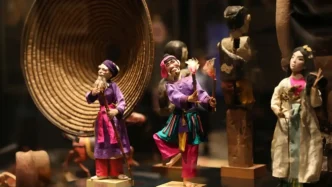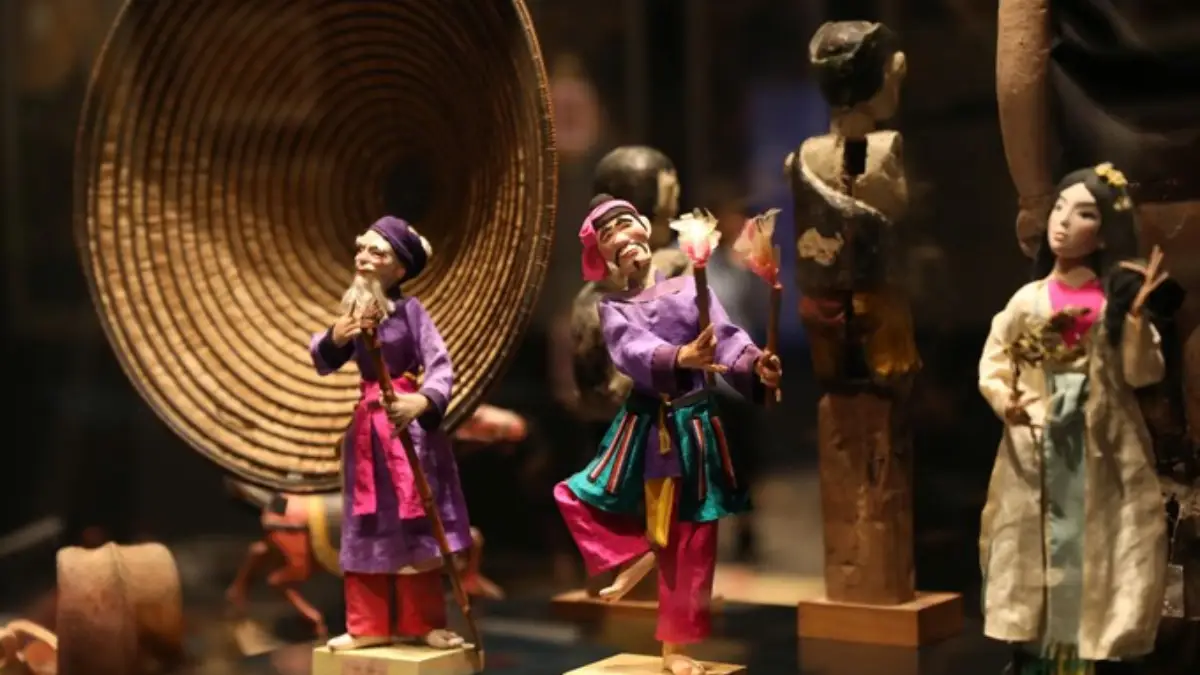In a vibrant celebration of Vietnam’s cultural heritage, the Vietnam Museum of Fine Arts in Hanoi has opened a newly curated gallery dedicated to folk and applied art. Launched on June 24, 2025, to commemorate the museum’s founding anniversary in 1966, this reimagined space offers a fresh perspective on the nation’s artistic traditions through thematic displays and innovative technology.
A Modern Take on Timeless Traditions
The revamped gallery marks a significant shift in how the museum presents its collection of folk and applied art. Previously showcasing over 500 items, the exhibition has been refined to around 200 carefully chosen pieces. This deliberate curation prioritizes narrative clarity, ensuring each artifact tells a compelling story about Vietnam’s diverse cultural landscape. The reduced physical footprint is complemented by digital archives accessible on-site, allowing visitors to explore pieces not currently on display.
One of the gallery’s standout features is its use of 3D visual storytelling. A striking example is a four-panel painting series depicting Vietnam’s staple crops—rice, corn, sweet potatoes, and cassava. These paintings are brought to life through a short 3D animation that captures scenes of agricultural life, from rice sprouting to birds flocking to harvest fields. The animation merges seamlessly with the traditional style of Đông Hồ folk art, a UNESCO-recognized intangible cultural heritage, offering a contemporary lens on historical imagery.
“This display is designed to tell stories” said Head of Exhibition Vương Lê Mỹ Học. “Artefacts will be rotated over time, ensuring that even those not currently shown remain accessible through our digital archives.”
Celebrating Vietnam’s Cultural Mosaic
The gallery showcases a rich array of items representing Vietnam’s ethnic diversity and historical interactions with Eastern and Southeast Asian cultures. Visitors can explore traditional costumes, jewelry, musical instruments, tools, weapons, household items, and children’s toys from various communities. Folk paintings from genres such as Đông Hồ, Hàng Trống, and Kim Hoàng are displayed alongside religious and ceremonial artifacts from the Dao, Cao Lan, Tày, and Nùng ethnic groups.
Sculptural works from craft hubs like Bát Tràng pottery village and the Trường Sơn–Central Highlands region depict everything from domestic scenes to mythological tales. The curatorial approach emphasizes contextual storytelling, pairing items like Mother Goddess worship paintings with ceremonial paper offerings to highlight their ritual significance. Lesser-known cultural practices are also illuminated, such as the intricate making of butterfly buttons in Thái clothing or the unique design of traditional bamboo sandals.
A particularly evocative display features dolls dressed in costumes from the classic chèo opera Quan Âm Thị Kính (The Tale of Lady Thị Kính), offering a glimpse into Vietnam’s traditional performing arts. These thoughtfully arranged exhibits invite visitors to engage with both familiar and obscure facets of the nation’s heritage.
Bridging Past and Present
The integration of technology in the gallery underscores a broader effort to make cultural heritage accessible to modern audiences. According to Học, the 3D animation accompanying the four-panel crop paintings was inspired by an unexhibited Đông Hồ series depicting the four seasons through native crops. “Vietnamese four-panel paintings are often influenced by Chinese aesthetics, but this particular set felt distinctly Vietnamese, which is why we chose to animate it” she explained. Other works, such as paintings of court ladies playing instruments, are available for viewing through the museum’s digital platforms.
This blend of traditional artistry and digital innovation reflects the museum’s commitment to preserving Vietnam’s cultural narratives while adapting to contemporary expectations. Film installations further enhance the visitor experience, providing a vivid and immersive understanding of the artifacts’ historical and social contexts.
A Space for Reflection and Discovery
The opening of this gallery comes at a time when cultural preservation is gaining renewed attention in Vietnam. By streamlining its collection and embracing modern storytelling techniques, the Vietnam Museum of Fine Arts offers a space where visitors can reflect on the nation’s past while connecting with its living traditions. The rotating exhibits ensure that the gallery remains dynamic, with fresh perspectives on Vietnam’s folk and applied arts continually brought to the forefront.
As Hanoi’s cultural scene continues to evolve, this new gallery stands as a testament to the enduring relevance of Vietnam’s heritage. It invites both locals and international visitors to discover the stories woven into every artifact, from rural harvest scenes to operatic costumes, fostering a deeper appreciation for the country’s rich artistic legacy.













